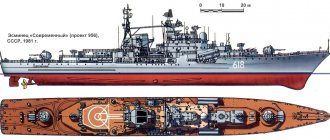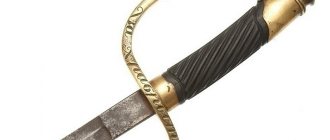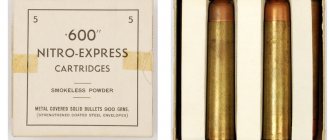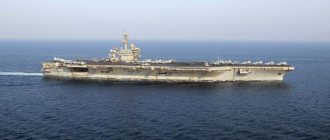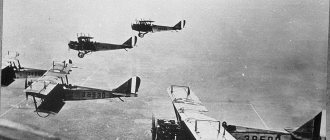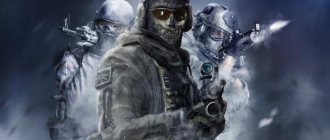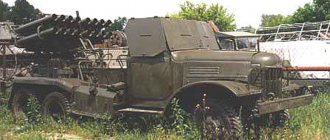SS-Division und Waffen-Division der SS
In total, 42 divisions were formed in the SS troops:
7 SS tank divisions; 6 SS panzergrenadier divisions; 7 SS grenadier divisions; 12 SS grenadier divisions; 6 SS mountain divisions and SS mountain divisions; 4 SS cavalry divisions.
During the Polish campaign, the mixed tank division "Kempf"
(Kempf) from Wehrmacht and SS troops.
From October 22, 1944, all SS divisions received continuous numbering
. A total of 38 divisions were numbered. But not all divisions were fully formed. Especially the divisions starting with number 22, which were formed at the end of the war in 1944–45. Some could not complete their formation because they were destroyed in battles, while other divisions were disbanded in order to strengthen other divisions. According to the memoirs of Burkhart Müller-Hillebrand, more than 22 SS divisions were never placed at the disposal of the Wehrmacht command.
The numbers of defeated or disbanded SS divisions were sometimes transferred to the newly formed ones.
1st SS Panzer Division "Leibstandarte CC Adolf Hitler"
(1.SS-Panzer-Division Leibstandarte SS Adolf Hitler)tler)tler) - former regiment "Leibstandarte SS Adolf Hitler" (Leibstandarte SS Adolf Hitler), then SS brigade, motorized SS division "Leibstandarte SS Adolf Hitler", later 1- I am the SS Panzergrenadier Division "Leibstandarte SS Adolf Hitler" (1.SS-Panzergrenadier-Division Leibstandarte SS Adolf Hitler).
2nd SS Panzer Division "Das Reich"
(2.SS-Panzer-Division Das Reich) - former SS reinforcement division (SS-Division Verfügungstruppe), motorized SS division "Reich" (SS-Division Reich), later SS panzergrenadier division "Das Reich" (SS-Panzergrenadier-Division Das Reich).
3rd SS Panzer Division "Totenkopf"
(3.SS-Panzer-Division Totenkopf) - the former motorized, then panzergrenadier division of the SS "Totenkopf" (SS-Panzergrenadier-Division Totenkopf).
4th Police Motorized (Panzergrenadier) SS Division
(4.SS-Polizei-Panzergrenadier-Division)
5th SS Panzer Division "Wiking"
(5.SS-Panzer-Division Wiking) - the former motorized, then panzergrenadier division of the SS "Viking" (SS-Panzergrenadier-Division Wiking).
6th SS Mountain Division "Nord"
(6.SS-Gebirgs-Division Nord)
7th SS Volunteer Mountain Division "Prince Eugene"
(7.SS-Freiwilligen-Gebirgs-Division Prinz Eugen)
8th SS Cavalry Division "Florian Geyer"
(8.SS-Kavallerie-Division Florian Geyer)
9th SS Panzer Division "Hohenstaufen"
(9.SS-Panzer-Division Hohenstaufen)
10th SS Panzer Division "Frundsberg"
(10.SS-Panzer-Division Frundsberg)
11th Volunteer SS Panzergrenadier Division "Nordland"
(11.SS-Freiwilligen-Panzergrenadier-Division Nordland)
12th SS Panzer Division "Hitlerjugend"
(12.SS-Panzer-Division Hitlerjugend)
13th SS Mountain Division "Handschar" or Croatian No. 1
(13.Waffen-Gebirgs-Division der SS Handschar – kroatische Nr.1)
14th Grenadier Division of the SS troops "Galicia" or Ukrainian No. 1
(14.Waffen-Grenadier-Division der SS Galizien – ukrainische Nr.1)
15th Grenadier Division of the SS troops or Latvian No. 1
(15.Waffen-Grenadier-Division der SS – lettische Nr.1)
16th Motorized (Panzergrenadier) SS Division "Reichsführer SS"
(16.SS-Panzergrenadier-Division Reichsführer SS)
17th SS Panzergrenadier Division "Götz von Berlichingen"
(17.SS-Panzergrenadier-Division Götz von Berlichingen)
18th SS Volunteer Panzergrenadier Division "Horst Wessel"
(18.SS-Freiwilligen-Panzergrenadier-Division Horst Wessel)
19th Grenadier Division of the SS troops or Latvian No. 2
(19.Waffen-Grenadier-Division der SS – lettische Nr.2)
20th Grenadier Division of the SS troops or Estonian No. 1
(20.Waffen-Grenadier-Division der SS – estnische Nr.1)
21st SS Mountain Division "Skanderbeg" or Albanian No. 1
(21.Waffen-Gebirgs-Division der SS Skanderbeg – albanische Nr.1)
22nd SS Volunteer Cavalry Division "Maria Theresa"
(22.SS-Freiwilligen-Kavallerie-Division Maria Theresa)
23rd SS Mountain Division "Kama" or Croatian No. 2
(23.Waffen-Gebirgs-Division der SS Kama - kroatische Nr. 2) - was formed in June 1944. The division was disbanded on October 31 of the same year due to a lack of personnel (Croats and Bosnian Muslims).
23rd SS Volunteer Panzergrenadier Division "Nederdand" or Dutch No. 1
(23.SS-Freiwilligen-Panzergrenadier-Division Nederland - niederlandische Nr.1) - formed in February 1945 from the SS volunteer panzergrenadier brigade "Nederland".
24th Mountain (Karsteger) SS Division
(24.Waffen-Gebirgs-(Karstjäger) Division der SS)
25th Grenadier Division of the SS troops "Hunyadi" or Hungarian No. 1
(25.Waffen-Grenadier-Divison der SS Hunyadi – ungarnische Nr.1)
26th Grenadier Division of the SS troops "Gombös" or Hungarian No. 2
(26.Waffen-Grenadier-Division der SS Gombos – ungarnische Nr.2)
27th SS Volunteer Grenadier Division "Langemarck" or Flemish No. 1
(27.SS-Freiwilligen-Grenadier-Division Langemarck)
28th SS Volunteer Grenadier Division "Wallonia" or Walloon No. 1
(28.SS-Freiwilligen-Grenadier-Division Wallonien)
29th Grenadier Division of the SS troops "RONA" or Russian No. 1
(29.Waffen-Grenadier-Division der SS - russische Nr.1) - was formed in August 1944 from an SS brigade under the command of SS Brigadeführer Bronislaw Kaminsky. The division was disbanded in November 1944 due to "horrible crimes, barbaric behavior and wild looting" during the suppression of the Warsaw Uprising.
29th Grenadier Division of the SS Italia or Italian No. 1
(29.Waffen-Grenadier-Division der SS Italia - Italienische Nr.1) - began formation on February 10, 1945 from the 1st Italian Grenadier Brigade of SS troops formed in November 1943.
30th Grenadier Division of the SS troops or Russian No. 2
(30.Waffen-Grenadier-Division der SS - russische Nr.2) - was formed in August 1944. In December, the division was disbanded due to unreliability of personnel. Its small personnel were sent to the 1st Infantry Division of the ROA Vlasov and the 1st Belarusian Grenadier Brigade of the SS troops.
30th Grenadier Division of the SS troops or Belarusian No. 1
(30.Waffen-Grenadier-Division der SS - weißruthenische Nr.1) - began formation on March 9, 1945 on the basis of the 1st Belarusian Grenadier Brigade of SS troops. The division was not completed and was disbanded in April. She did not take part in the battles.
31st SS Volunteer Grenadier Division "Bohemia-Moravia"
(31.SS-Freiwilligen-Grenadier-Division Böhmen-Mähren)
32nd SS Volunteer Grenadier Division "30 January"
(32.SS-Freiwilligen-Grenadier-Division 30 Januar)
33rd SS Cavalry Division or Hungarian No. 3
(33.Waffen-Grenadier-Division der SS - ungarnische Nr. 3) - was formed in November 1944. The division was defeated in Budapest in January 1945.
33rd Grenadier Division of the SS Charlemagne or French No. 1
(33.Waffen-Grenadier-Division der SS Charlemagne - französische Nr 1) - began formation on February 10, 1945 from the 1st French Grenadier Brigade of the SS Charlemagne troops. Fought in Pomerania and Berlin. The battalion of volunteers defended the Reich Chancellery until May 2, 1945.
34th SS Volunteer Grenadier Division "Landstorm Nederland" or Dutch No. 1
(34.SS-Freiwilligen-Grenadier-Division Landstorm Nederland)land)
35th SS Police Grenadier Division
(35.SS-und Polizei-Grenadier-Division)
36th SS Grenadier Division "Dirlewanger"
(36.Waffen-Grenadier-Division der SS Dirlewanger)
37th SS Volunteer Cavalry Division "Lützow"
(37. SS-Freiwilligen-Kavallerie-Division Lutzow)
38th SS Grenadier Division "Nibelungs"
(38.SS-Grenadier-Division Nibelungen)
At the beginning of 1945, it was decided to form seven more divisions in the SS troops,
which were assigned numbers and names, but the formation of these formations was not started due to the end of the war:
39th SS Mountain Division "Andreas Hofer"; 40th SS Panzer Division "Feldherrnhalle" (former Panzergrenadier Division "Feldherrnhalle" and former 13th Panzer Division of the Wehrmacht); 41st SS Grenadier Division "Kalevala"; 42nd SS Division "Niedersachsen"; 43rd SS Division "Reichsmarshal"; 44th SS Division "Wallenstein"; 45th SS Division "Wareger".
Content
- 1 Formation
- 2 Battle path
- 3 Composition 3.1 In 1940
- 3.2 In 1943
- 5.1 Knight's Cross of the Iron Cross (36)
Recipients of the Knight's Cross of the Iron Cross
Knight's Cross of the Iron Cross (36)
- Erwin Rommel, 05/27/1940 - Major General, commander of the 7th Panzer Division
- Karl Rothenburg, 06/03/1940 – colonel, commander of the 25th tank regiment
- Georg von Bismarck, 09/29/1940 – colonel, commander of the 7th Infantry Regiment
- Rudolf Neubrandt, 09/29/1940 – reserve lieutenant, platoon commander of the 37th reconnaissance battalion
- Adalbert Schultz, 09.29.1940 – captain, commander of the 1st company of the 25th tank regiment
- Hans Freiherr von Funk, 07/15/1941 – Major General, commander of the 7th Panzer Division
- Horst Orloff, 07/27/1941 – chief lieutenant, commander of the 11th company of the 25th tank regiment
- Herbert Oll, 08/23/1941 – captain, commander of the 1st division of the 78th artillery regiment
- Richard Grunert, 10/14/1941 – lieutenant reserve, commander of the 3rd company of the 7th motorcycle battalion
- Eduard Hauser, 12/04/1941 – colonel, commander of the 25th tank regiment
- Hasso von Manteuffel, 12/31/1941 – colonel, commander of the 6th Infantry Regiment
- Rudi Reineck, 03/20/1942 – chief lieutenant, commander of the 8th company of the 6th rifle regiment
- Gerhard Heilbronn, 04/12/1942 – captain, commander of the 2nd battalion of the 7th rifle regiment
- Ewald Baranek, 02/12/1943 – chief lieutenant, commander of the 58th tank engineer battalion
- Wolfgang Glasemer, 02/12/1943 – colonel, commander of the 6th Panzergrenadier Regiment
- Friedrich-Karl von Steinkeller, 03/31/1943 – Oberstleutnant, commander of the 7th Panzergrenadier Regiment
- Helmut Gutzschhan, 05/08/1943 – captain, commander of the 1st battalion of the 6th Panzergrenadier Regiment
- Karl-Heinz Rossbach, 06/06/1943 – sergeant major, platoon commander of the 2nd company of the 7th Panzergrenadier Regiment
- Horst Fortun, 08/07/1943 – captain, commander of the 1st battalion of the 25th tank regiment
- Andreas Thaler, 01/13/1944 – captain, company commander of the 2nd battalion of the 25th tank regiment
- Heinz Kolchik, 04/06/1944 – captain, commander of the 7th tank reconnaissance battalion
- Willi Geisler, 05/14/1944 – non-commissioned officer, squad commander of the 5th company of the 7th tank reconnaissance battalion
- Christoph Kremer, 05/14/1944 – chief sergeant major, platoon commander of the 5th company of the 7th Panzergrenadier Regiment
- Walter Homuth, 05/14/1944 – chief sergeant major, commander of the 7th company of the 6th Panzergrenadier Regiment
- Adalbert Weitzel, 08/23/1944 – Oberstleutnant, commander of the 6th Panzergrenadier Regiment
- Heinrich Geyer, 10/22/1944 – sergeant major, platoon commander of the 2nd company of the 6th Panzergrenadier Regiment
- Walter Brandes, 10/28/1944 – captain, commander of the 2nd battalion of the 25th tank regiment
- Hans-Babo von Rohr, 11/05/1944 – reserve lieutenant, platoon commander of the 2nd company of the 25th tank regiment
- Alfred Pikht, 12/09/1944 – reserve major, commander of the 3rd division of the 78th tank artillery regiment
- Hans Ditter, 12/11/1944 – chief sergeant major, unit commander of the 1st company of the 7th Panzergrenadier Regiment
- Joachim Dunkler, 02/18/1945 – major, commander of the 1st battalion of the 7th Panzergrenadier Regiment
- Erwin Hinz, 03/11/1945 – chief corporal, commander of an armored personnel carrier of the 8th company of the 6th Panzergrenadier Regiment
- Fritz Bachmann, 04/05/1945 – chief corporal of the 1st company of the 7th Panzergrenadier Regiment
- Johann Kondne, 04/05/1945 – captain, commander of the 2nd battalion of the 6th Panzergrenadier Regiment
- Harald von Schütz, 04/05/1945 – major, commander of the 7th Panzer Reconnaissance Battalion
- Theodor Honniger, 05/09/1945 – chief sergeant major, platoon commander of the 3rd company of the 25th tank regiment
Knight's Cross of the Iron Cross with Oak Leaves (6)
- Erwin Rommel (No. 10), 03/20/1941 – Lieutenant General, commander of the 7th Panzer Division
- Adalbert Schultz (No. 47), 12/31/1941 – captain, commander of the 1st battalion of the 25th tank regiment
- Richard Grünert (No. 244), 05/17/1943 – reserve major, commander of the 1st battalion of the 7th Panzergrenadier Regiment
- Hans Freiherr von Funk (No. 278), 08/22/1943 – Lieutenant General, commander of the 7th Panzer Division
- Hasso von Manteuffel (No. 332), 11/23/1943 – Major General, commander of the 7th Panzer Division
- Hans-Babo von Rohr (No. 754), 02/24/1945 – reserve lieutenant, commander of the 2nd company of the 25th tank regiment
Knight's Cross of the Iron Cross with Oak Leaves and Swords (3)
- Adalbert Schultz (No. 33), 08/06/1943 – Oberstleutnant, commander of the 25th Tank Regiment
- Hasso von Manteuffel (No. 50), 02/22/1944 – Major General, commander of the 7th Panzer Division
- Karl Maus (No. 101), 10/23/1944 – Major General, commander of the 7th Panzer Division
Knight's Cross of the Iron Cross with Oak Leaves, Swords and Diamonds (2)
- Adalbert Schultz (No. 9), 12/14/1943 – colonel, commander of the 25th Tank Regiment
- Karl Maus (No. 26), 04/15/1945 – Lieutenant General, commander of the 7th Panzer Division
References
- Haskew, Michael E. (2011). World War II Data Book: Wehrmacht 1935-1945
. London: Amber Books. ISBN 978-1-907446-95-5. p.106 - a b
Haskew (2011), p. 74. - Haskew (2011), p. 78.
- Müller-Hillebrand B., Das Heer, 1933-1945. vol. II, E. S. Mittler & Sohn, 1969, pp. 161–162.
- Haskew (2011), pp. 113-114.
- Haskew (2011), pp. 102-103.
- Haskew (2011), pp. 103-104.
- Haskew (2011), pp. 104-105.
- Haskew (2011), p. 114.
- Haskew (2011), p. 119.
Division commanders
| Name | Start | End | Rank | Notes |
| Stumme! Georg Stumme (German: Georg Stumme ) | 1939-10-18 !18.10.1939 | 1940-02-05 !05.02.1940 | lieutenant general | |
| Rommel! Erwin Rommel (German: Erwin Rommel ) | 1940-02-05 !05.02.1940 | 1941-02-14 !14.02.1941 | Major General, Lieutenant General (from 02/09/1941) | |
| funck! Hans von Funck (German: Hans Freiherr von Funck ) | 1941-02-15 !15.02.1941 | 1943-08-17 !17.08.1943 | Major General, Lieutenant General (from 09/01/1942) | |
| glesemer! Wolfgang Gläsemer (German: Wolfgang Gläsemer ) | 1943-08-17 !17.08.1943 | 1943-08-20 !20.08.1943 | Colonel | And. o., commander of the 6th Panzergrenadier Regiment |
| manteuffel! Hasso von Manteuffel (German: Hasso Freiherr von Manteuffel ) | 1943-08-20 !20.08.1943 | 1944-01-01 !01.01.1944 | major general | |
| Schulz! Adelbert Schulz (German: Adelbert Schulz ) | 1944-01-01 !01.01.1944 | 1944-01-28 !28.01.1944 | major general | died in the battle near Shepetivka |
| glesemer! Wolfgang Gläsemer (German: Wolfgang Gläsemer ) | 1944-01-28 !28.01.1944 | 1944-01-30 !30.01.1944 | Colonel | And. o., commander of the 6th Panzergrenadier Regiment |
| Maus! Karl Maus (German: Karl Mauss ) | 1944-01-30 !30.01.1944 | 1944-05-02 !02.05.1944 | Colonel, Major General (from 04/01/1944) | |
| Schmidhuber! Gerhard Schmidhuber (German: Gerhard Schmidhuber ) | 1944-05-02 !02.05.1944 | 1944-09-09 !09.09.1944 | Colonel | And. o., deputy division commander |
| Maus! Karl Maus (German: Karl Mauss ) | 1944-09-09 !09.09.1944 | 1944-10-31 !31.10.1944 | Major General, Lieutenant General (from 10.10.1944) | |
| Meder! Helmut Meder (German: Hellmuth Mäder ) | 1944-10-31 !31.10.1944 | 1944-11-30 !30.11.1944 | Colonel | And. O. |
| Maus! Karl Maus (German: Karl Mauss ) | 1944-11-30 !30.11.1944 | 1945-01-05 !05.01.1945 | lieutenant general | |
| Lemke! Max Lemke (German: Max Lemke ) | 1945-01-05 !05.01.1945 | 1945-01-23 !23.01.1945 | Colonel | temporary |
| Maus! Karl Maus (German: Karl Mauss ) | 1945-01-23 !23.01.1945 | 1945-03-25 !25.03.1945 | lieutenant general | |
| Christern! Hans Christern (German: Hans Christern ) | 1945-03-26 !26.03.1945 | 1945-05-08 !08.05.1945 | Colonel |
Waffen-SS (Schutzstaffel)
Main article: Waffen SS divisions
All Waffen-SS
were ordered in a single series up to the 38th, regardless of type.
Those with nationality markings were recruited at least nominally from those nationalities. Many of the higher numbered units were small battle groups ( Kampfgruppen
), that is, divisions in name only.
Also Panzer Division Kempf
Heer
and
Waffen-SS
components .
Compound
In 1940
- 25th Tank Regiment
- 7th Infantry Brigade 6th Infantry Regiment
- 7th Infantry Regiment
In 1943
- 25th Tank Regiment
- 6th Panzergrenadier Regiment
- 7th Panzergrenadier Regiment
- 78th Tank Artillery Regiment
- 7th Reconnaissance Battalion
- 42nd Anti-Tank Battalion
- 296th Anti-Aircraft Artillery Battalion
- 58th Tank Engineer Battalion
- 83rd Signal Battalion
- 58th Field Reserve Battalion
Excerpt characterizing the 7th Panzer Division (Third Reich)
Although it was not entirely clear what exactly the painter wanted to express by representing the so-called King of Rome piercing the globe with a stick, this allegory, like everyone who saw the picture in Paris, and Napoleon, obviously seemed clear and liked it very much. “Roi de Rome, [Roman King.],” he said, pointing to the portrait with a graceful gesture of his hand. – Admirable! [Wonderful!] – With the Italian ability to change his facial expression at will, he approached the portrait and pretended to be thoughtfully tender. He felt that what he would say and do now was history. And it seemed to him that the best thing he could do now is that he, with his greatness, as a result of which his son played with the globe in a bilbok, should show, in contrast to this greatness, the simplest fatherly tenderness. His eyes became misty, he moved, looked back at the chair (the chair jumped under him) and sat down on it opposite the portrait. One gesture from him - and everyone tiptoed out, leaving the great man to himself and his feelings. After sitting for some time and touching, without knowing why, his hand to the roughness of the glare of the portrait, he stood up and again called Bosse and the duty officer. He ordered the portrait to be taken out in front of the tent, so as not to deprive the old guard, who stood near his tent, of the happiness of seeing the Roman king, the son and heir of their beloved sovereign. As he had expected, while he was having breakfast with Monsieur Bosse, who had received this honor, in front of the tent the enthusiastic cries of the officers and soldiers of the old guard who had come running to the portrait were heard. – Vive l'Empereur! Vive le Roi de Rome! Vive l'Empereur! [Long live the Emperor! Long live the Roman King!] - enthusiastic voices were heard. After breakfast, Napoleon, in the presence of Bosse, dictated his orders for the army. – Courte et energique! [Short and energetic!] - said Napoleon when he read the written proclamation immediately without amendments. The order was: “Warriors! This is the battle you have longed for. Victory depends on you. It is necessary for us; she will provide us with everything we need: comfortable apartments and a quick return to our homeland. Act as you acted at Austerlitz, Friedland, Vitebsk and Smolensk. May later posterity proudly remember your exploits to this day. Let it be said about each of you: he was in the great battle near Moscow!” – De la Moscow! [Near Moscow!] - Napoleon repeated, and, inviting Mr. Bosset, who loved to travel, to join him in his walk, he left the tent to the saddled horses. “Votre Majeste a trop de bonte, [You are too kind, Your Majesty," Bosse said when asked to accompany the emperor: he was sleepy and did not know how and was afraid to ride a horse. But Napoleon nodded to the traveler, and Bosse had to go. When Napoleon left the tent, the screams of the guards in front of the portrait of his son intensified even more. Napoleon frowned. “Take it off,” he said, pointing to the portrait with a graceful, majestic gesture. “It’s too early for him to see the battlefield.” Bosse, closing his eyes and bowing his head, took a deep breath, with this gesture showing how he knew how to appreciate and understand the words of the emperor. Napoleon spent the entire day of August 25, as his historians say, on horseback, inspecting the area, discussing the plans presented to him by his marshals, and personally giving orders to his generals. The original line of Russian troops along Kolocha was broken, and part of this line, namely the Russian left flank, was driven back as a result of the capture of the Shevardinsky redoubt on the 24th. This part of the line was not fortified, no longer protected by the river, and in front of it there was only a more open and level place. It was obvious to every military and non-military person that the French were supposed to attack this part of the line. It seemed that this did not require many considerations, there was no need for such care and troubles of the emperor and his marshals, and there was no need at all for that special highest ability called genius, which they so like to attribute to Napoleon; but the historians who subsequently described this event, and the people then surrounding Napoleon, and he himself, thought differently. Napoleon drove across the field, thoughtfully peered at the area, shook his head with himself in approval or disbelief, and, without informing the generals around him of the thoughtful move that guided his decisions, conveyed to them only final conclusions in the form of orders. After listening to Davout's proposal, called the Duke of Ecmul, to bypass the Russian left flank, Napoleon said that this did not need to be done, without explaining why it was not necessary. To the proposal of General Compan (who was supposed to attack the flushes) to lead his division through the forest, Napoleon expressed his consent, despite the fact that the so-called Duke of Elchingen, that is, Ney, allowed himself to note that movement through the forest was dangerous and could upset the division . Having examined the area opposite the Shevardinsky redoubt, Napoleon thought for a while in silence and pointed to the places where two batteries were to be set up by tomorrow to operate against the Russian fortifications, and the places where field artillery was to be lined up next to them. Having given these and other orders, he returned to his headquarters, and the disposition of the battle was written under his dictation. This disposition, about which French historians and other historians speak with delight, was as follows: “At dawn, two new batteries, arranged in the night, on the plain occupied by the Prince of Eckmuhl, will open fire on two opposing enemy batteries. At the same time, the chief of artillery of the 1st Corps, General Pernetti, with 30 guns of the Compan division and all the howitzers of the Dessay and Friant divisions, will move forward, open fire and bombard the enemy battery with grenades, against which they will act! 24 guns of the Guards artillery, 30 guns of the Compan division and 8 guns of the Friant and Desseux divisions, a total of 62 guns. The chief of artillery of the 3rd Corps, General Fouche, will place all the howitzers of the 3rd and 8th Corps, 16 in total, on the flanks of the battery, which is assigned to bombard the left fortification, which will total 40 guns against it. General Sorbier must be ready, at the first order, to march with all the howitzers of the Guards artillery against one or another fortification. Continuing the cannonade, Prince Poniatowski will head towards the village, into the forest and bypass the enemy position. General Compan will move through the forest to take possession of the first fortification. Upon entering the battle in this way, orders will be given according to the actions of the enemy. The cannonade on the left flank will begin as soon as the cannonade of the right wing is heard. The riflemen of Moran's division and the Viceroy's division would open heavy fire when they saw the beginning of the attack of the right wing. The Viceroy will take possession of the village [of Borodin] and cross his three bridges, following at the same height with the divisions of Morand and Gerard, which, under his leadership, will head to the redoubt and enter the line with the rest of the army. All this must be done in order (le tout se fera avec ordre et methode), keeping the troops in reserve as much as possible. In the imperial camp, near Mozhaisk, September 6, 1812.” This disposition, written in a very unclear and confused way, if we allow ourselves to regard his orders without religious horror at Napoleon’s genius, contained four points - four orders. None of these orders could be or were carried out. The disposition says, first: that the batteries set up at the place chosen by Napoleon with the Pernetti and Fouche guns aligned with them, a total of one hundred and two guns, open fire and bombard the Russian flashes and redoubts with shells. This could not be done, since the shells from the places appointed by Napoleon did not reach the Russian works, and these one hundred and two guns fired empty until the nearest commander, contrary to Napoleon’s orders, pushed them forward. The second order was that Poniatowski, heading towards the village into the forest, should bypass the left wing of the Russians. This could not be and was not done because Poniatovsky, heading towards the village into the forest, met Tuchkov there blocking his way and could not and did not bypass the Russian position. Third order: General Kompan will move into the forest to take possession of the first fortification. Compan's division did not capture the first fortification, but was repulsed because, leaving the forest, it had to form under grapeshot fire, which Napoleon did not know. Fourth: The Viceroy will take possession of the village (Borodino) and cross his three bridges, following at the same height with the divisions of Maran and Friant (about which it is not said where and when they will move), which, under his leadership, will go to the redoubt and enter the line with other troops. As far as one can understand - if not from the confused period of this, then from those attempts that were made by the Viceroy to carry out the orders given to him - he was supposed to move through Borodino on the left to the redoubt, while the divisions of Moran and Friant were supposed to move simultaneously from the front. All this, as well as other points of disposition, was not and could not be fulfilled. Having passed Borodino, the viceroy was repulsed at Kolocha and could not go further; The divisions of Moran and Friant did not take the redoubt, but were repulsed, and the redoubt was captured by cavalry at the end of the battle (probably an unexpected and unheard of thing for Napoleon). So, none of the orders of the disposition were and could not be executed. But the disposition says that upon entering the battle in this way, orders will be given corresponding to the actions of the enemy, and therefore it would seem that during the battle Napoleon would make all the necessary orders; but this was not and could not be because during the entire battle Napoleon was so far from him that (as it turned out later) the course of the battle could not be known to him and not a single order of his during the battle could be carried out. Many historians say that the Battle of Borodino was not won by the French because Napoleon had a runny nose, that if he had not had a runny nose, his orders before and during the battle would have been even more ingenious, and Russia would have perished, et la face du monde eut ete changee. [and the face of the world would change.] For historians who recognize that Russia was formed by the will of one man - Peter the Great, and France from a republic developed into an empire, and French troops went to Russia by the will of one man - Napoleon, the reasoning is that Russia remained powerful because Napoleon had a big cold on the 26th, such reasoning is inevitably consistent for such historians. If it depended on the will of Napoleon to give or not to give the Battle of Borodino and it depended on his will to make this or that order, then it is obvious that a runny nose, which had an impact on the manifestation of his will, could be the reason for the salvation of Russia and that therefore the valet who forgot to give Napoleon On the 24th, waterproof boots were the savior of Russia. On this path of thought, this conclusion is undoubted - as undoubted as the conclusion that Voltaire made jokingly (without knowing what) when he said that the Night of St. Bartholomew occurred from an upset stomach of Charles IX. But for people who do not allow that Russia was formed by the will of one person - Peter I, and that the French Empire was formed and the war with Russia began by the will of one person - Napoleon, this reasoning not only seems incorrect, unreasonable, but also contrary to the whole essence human. To the question of what constitutes the cause of historical events, another answer seems to be that the course of world events is predetermined from above, depends on the coincidence of all the arbitrariness of the people participating in these events, and that the influence of Napoleons on the course of these events is only external and fictitious. Strange as it may seem at first glance, the assumption that the Night of St. Bartholomew, the order for which was given by Charles IX, did not occur at his will, but that it only seemed to him that he ordered it to be done, and that the Borodino massacre of eighty thousand people did not occur at the will of Napoleon (despite the fact that he gave orders about the beginning and course of the battle), and that it seemed to him only that he ordered it - no matter how strange this assumption seems, but human dignity tells me that each of us, if not more, then no less a person than the great Napoleon orders that this solution to the issue be allowed, and historical research abundantly confirms this assumption.

